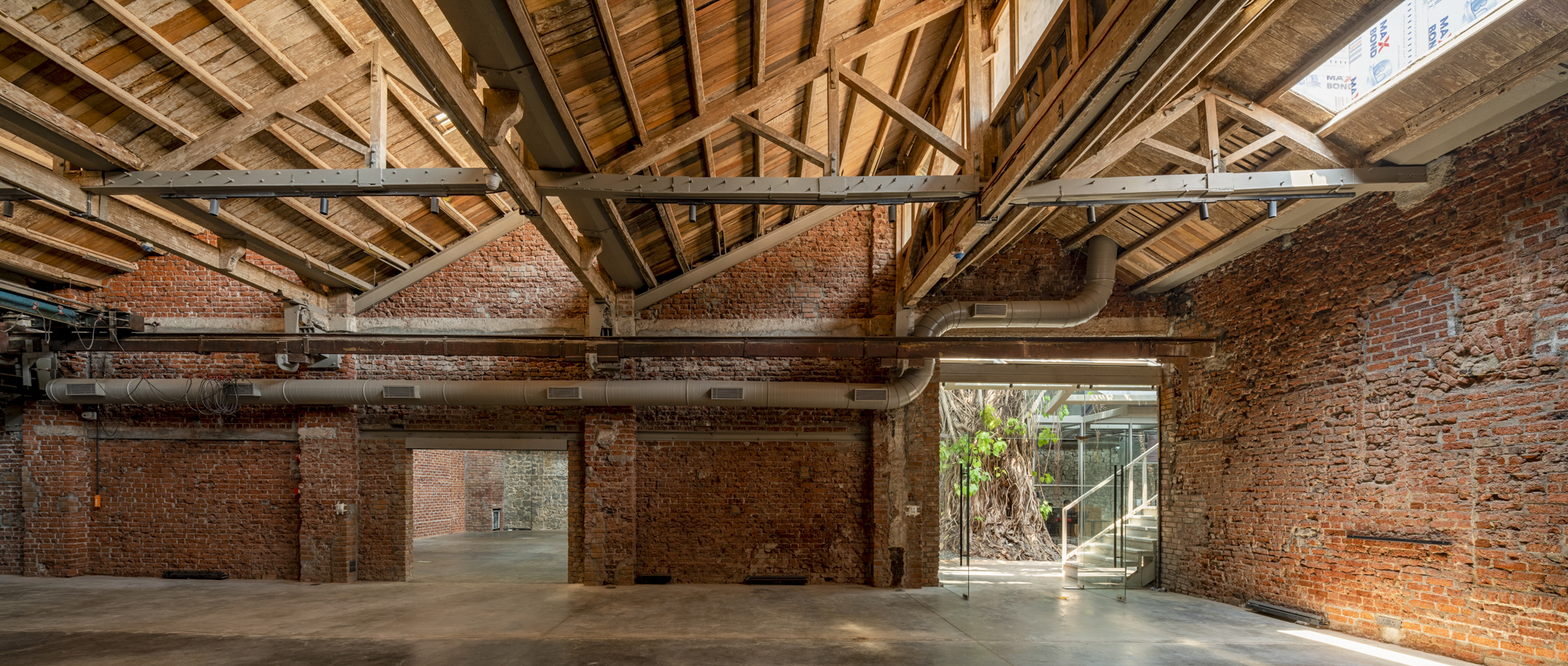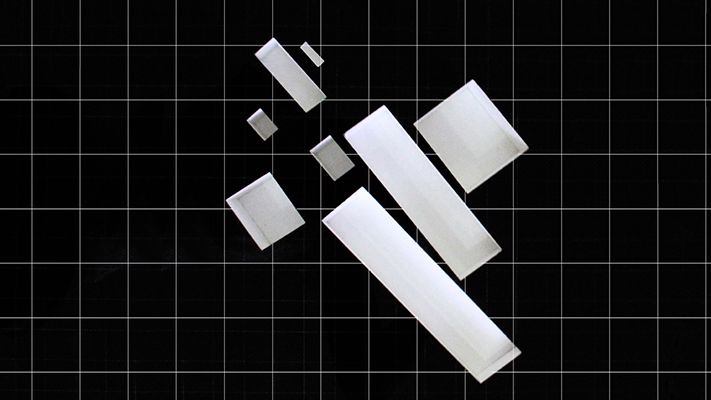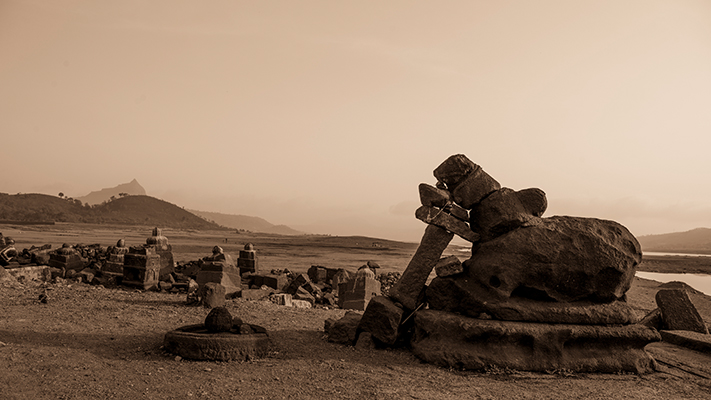IF.BE: Journey between 'Found' and 'Made'
The 140-year-old Ambico Ice Factory is located in Ballard estate, the heart of Mumbai's heritage precinct. We have re-imagined the space as IF.BE (Ice Factory Ballard Estate), an organism that merges art, exhibition, events, performance, gathering, food and design. It is a space for encounters, organised within beautiful but ageing structures surrounding a large Banyan tree. The suturing is imagined to heighten the fragile, almost tenuous relationship between the ‘Found’ and the ‘Made’. It manifests the true nature of IF.BE as an exploration of the liminal space between speculation (IF) and reality (BE).
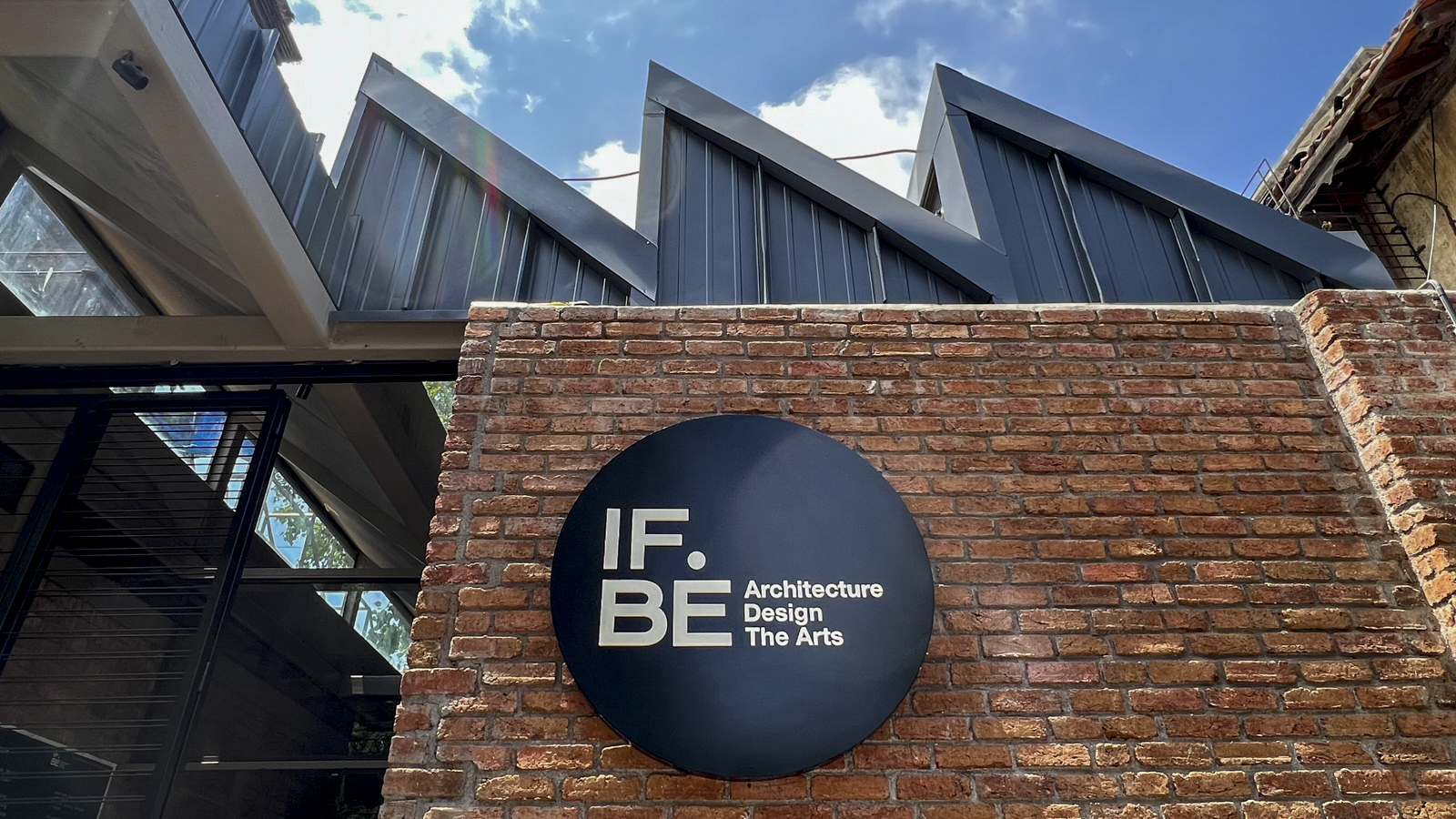

Entrance from Calicut Street
Time, arbitrary additions, asymmetric structural and infrastructural loading had caused a level of damage and decay that was revealed through a patient and assiduous examination of walls, foundations, roofs, etc. The drawing archives revealed a continuous courtyard connecting Calicut and Cochin Street, which was now cluttered with ad-hoc structures and metal roofs.
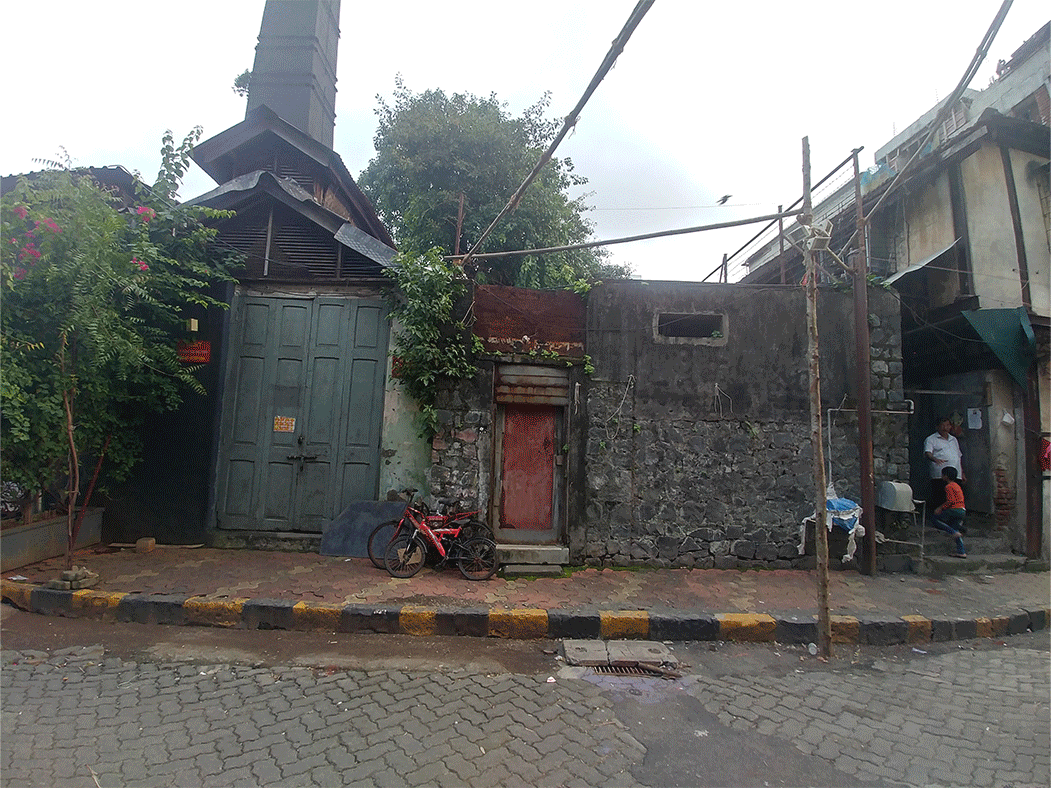
“The Ice and the Banyan Tree…they provided the spark of inspiration that resulted in the IFBE project”- Kamal Malik
Substation
For four months, the factory's decades-old plaster walls were gently scraped before the first semblance of brickwork could emerge. The building's vintage Burma teak woodwork, lost to time, was slowly uncovered.
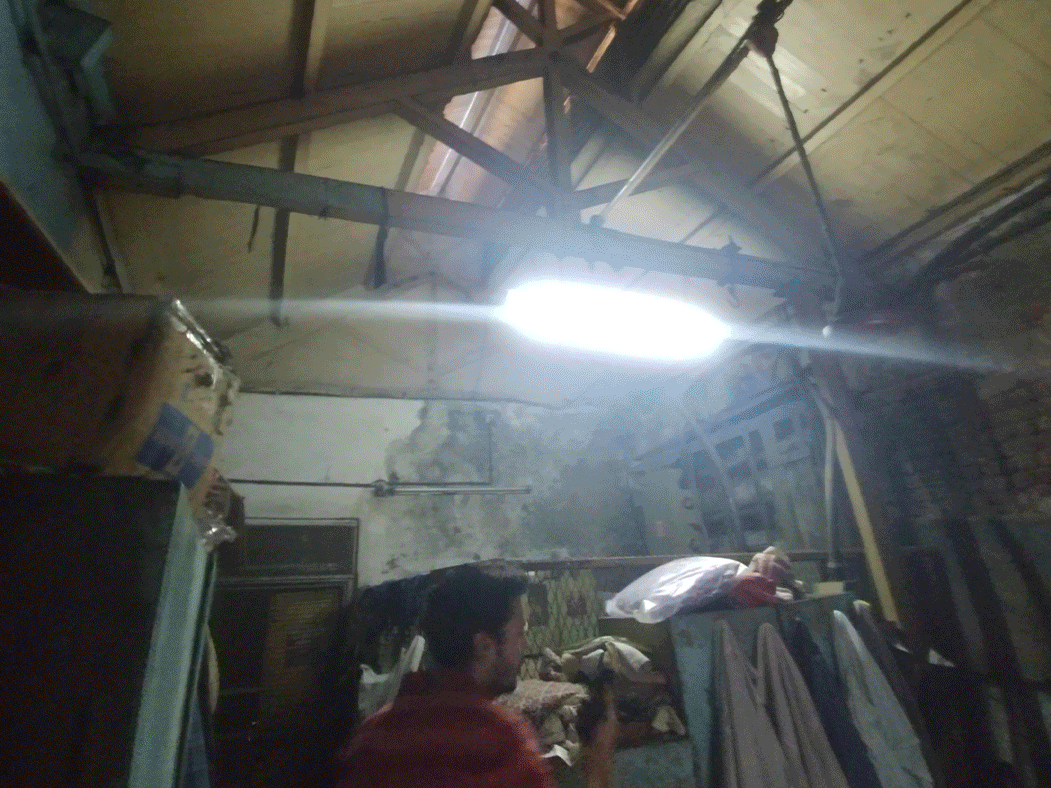
Courtyard
The roots of the tree, growing within the premises, had been choked under rubble and concrete. This tree provided the spark of inspiration that birthed the project - the shift from the Ambico Ice Factory to IF.BE. The recovery of the courtyard, restoring safety and clarity to the existing structure, revealing the organisational and physical anatomy, allowing the Banyan tree to breathe and finding a way to shelter the new/additional spaces through a dialogue with the original structures was critical.
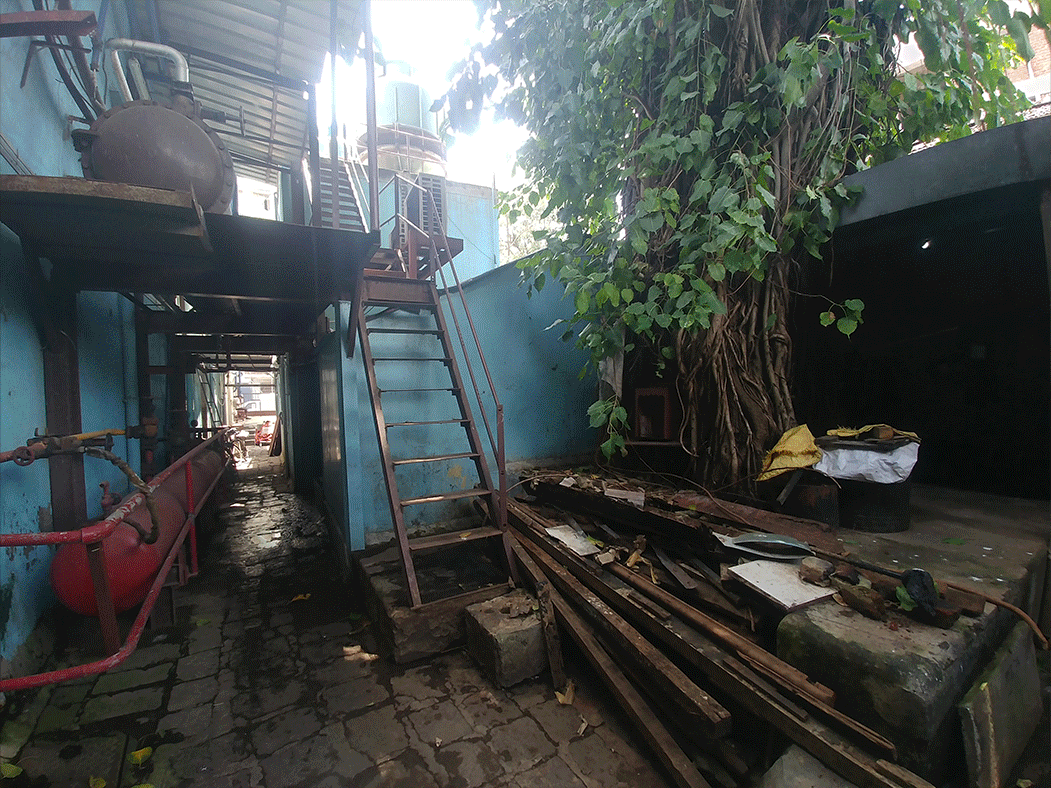
Substation Connect
The pitched lantern roof of the sub-station extends over the courtyard and impacts the large glass walls of the newly formed ‘Cathedral’ Space.
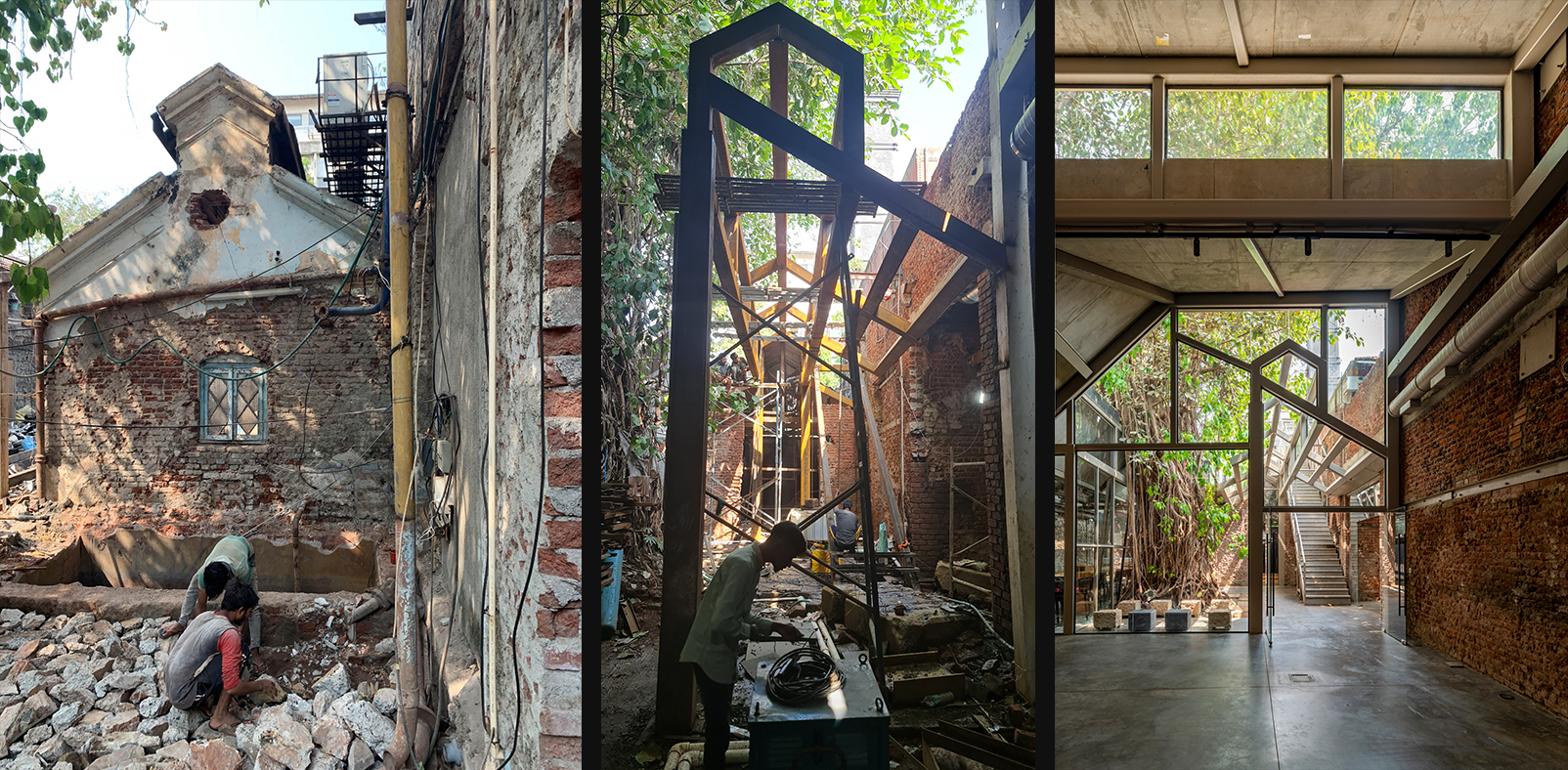
Cathedral
The existing North-light truss roofs are extended over the Cathedral but this undergoes two mutations to rotate 90-degrees to form the East-light roofs, while simultaneously dipping sharply towards the existing stone boundary wall to preserve light and ventilation for the neighbouring structure.
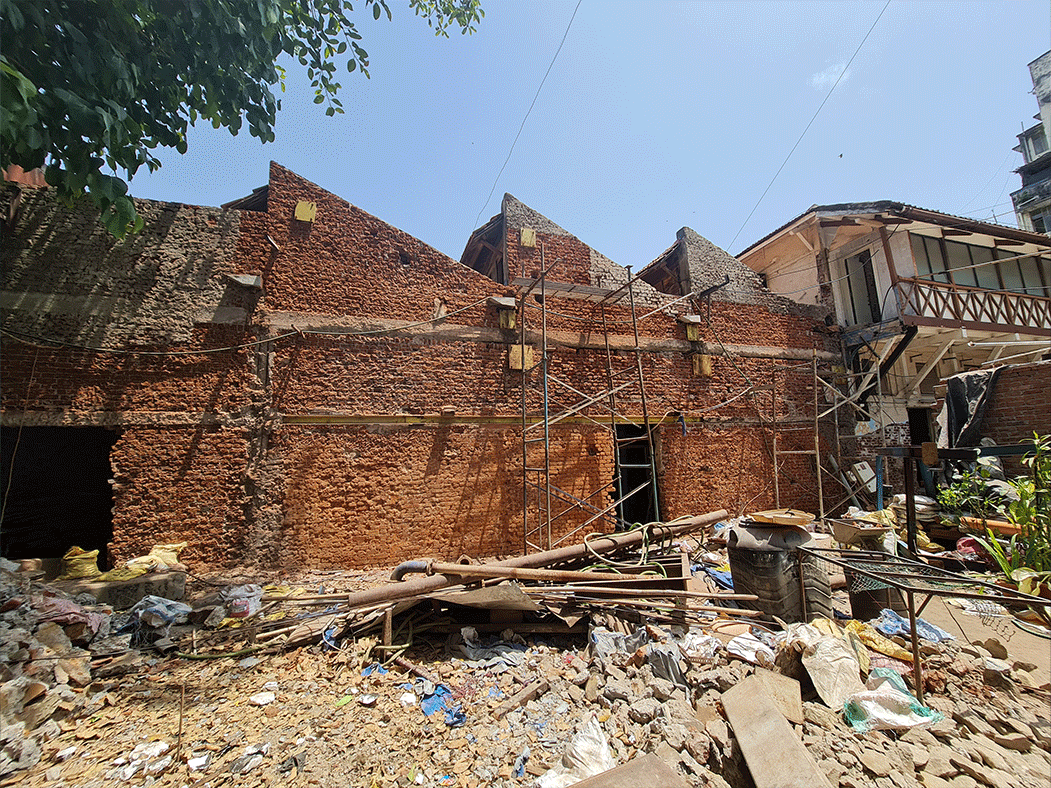
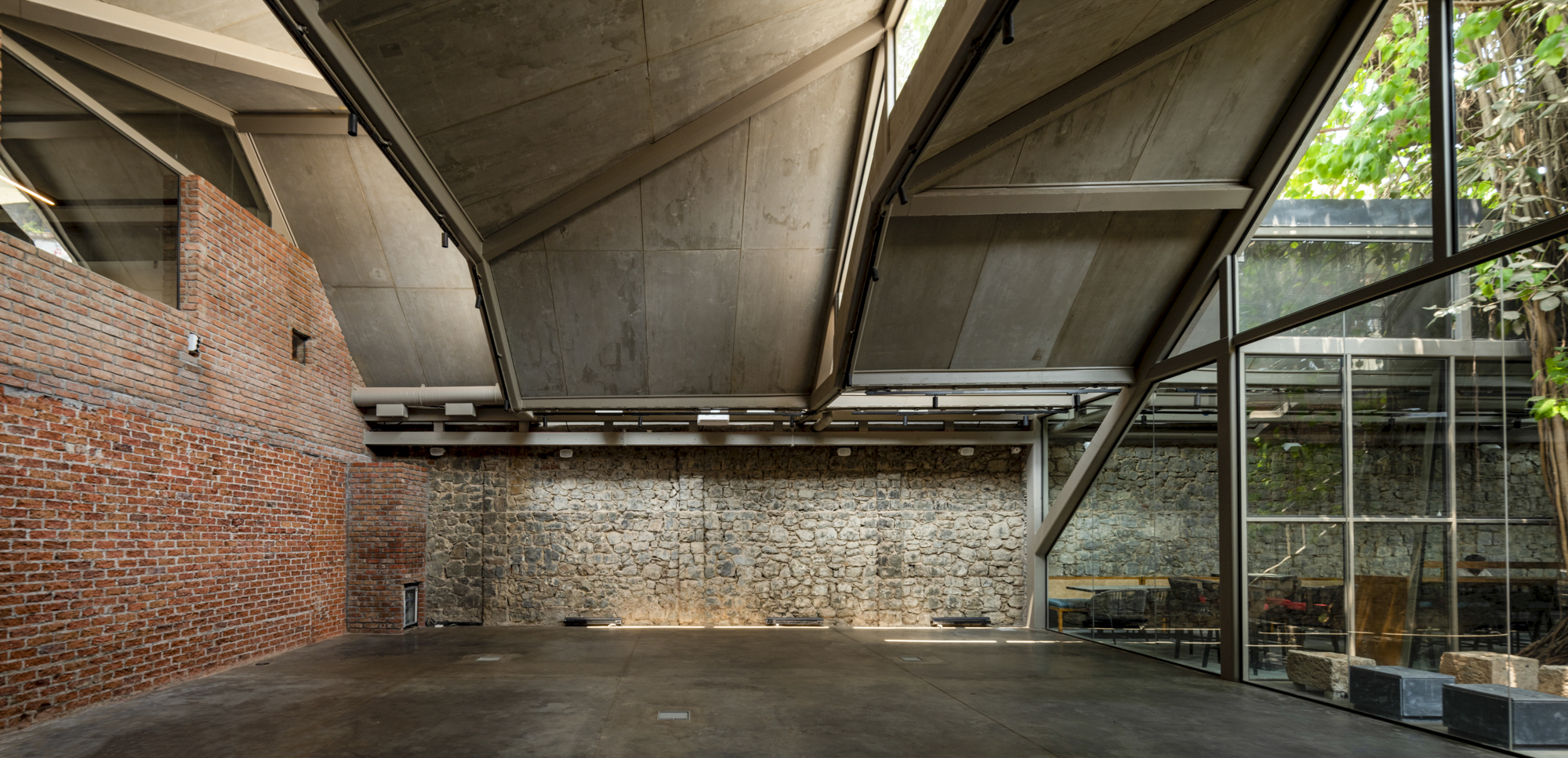
Cafe
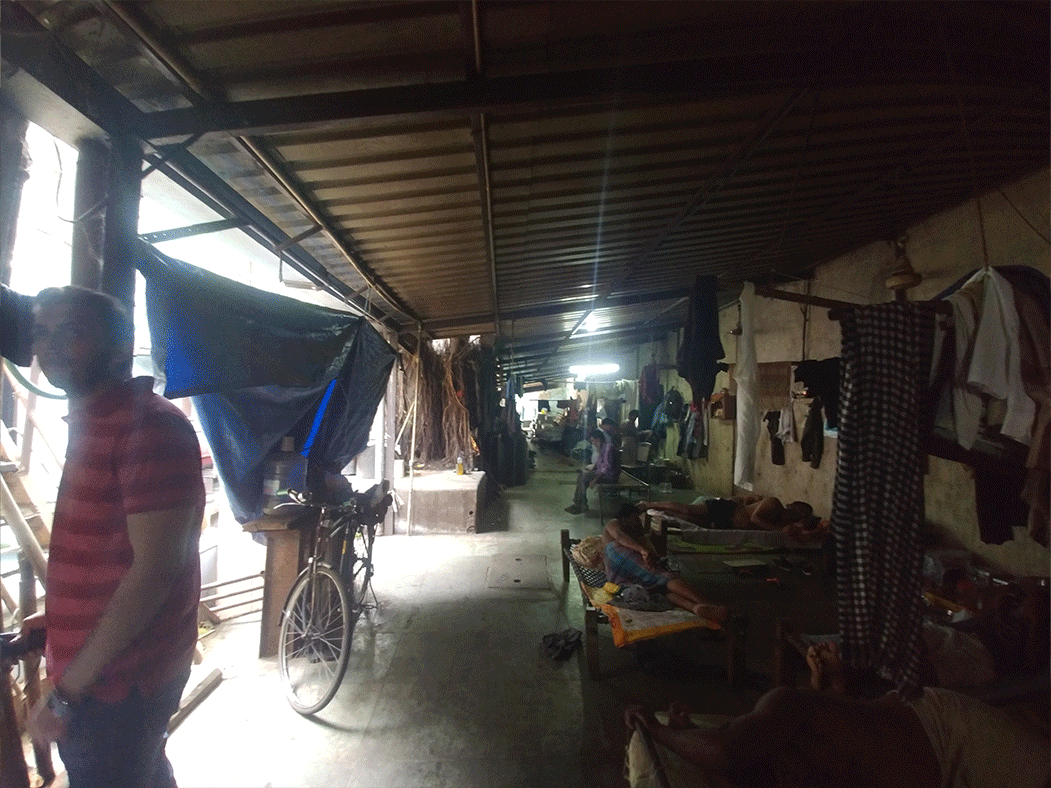
Ice Factory
The main Ice Factory, sub-station, cold storage and the ice-cubing area required intensive examination and surgical intervention through retrofits to stabilise crumbling, warped and leaking walls, sagging roofs and trusses (some of which had detached from their bearings). The original gantry, used to move slabs of ice, continues to be housed in the Ice Factory and be mobilised as part of art installations as well as used to innovatively partition the room.
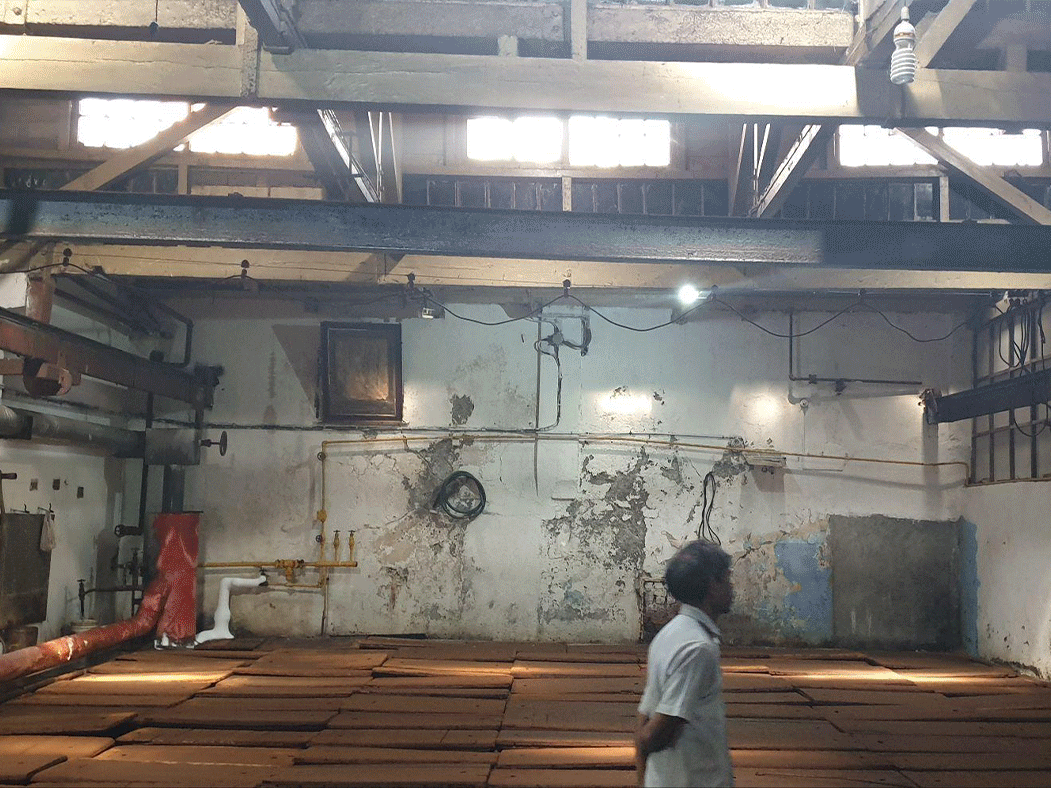
“The thickly plastered walls were scraped scrupulously for close to four months alone before the first semblance of brickwork could emerge” -Arjun Malik
The team at Malik Architecture has sensitively both "unmade" and "remade" the Ice Factory, spending hundreds of manhours onsite, over three years. Treating the factory as an archaeological site, the team dug deep, unsure of what they'd find. Eventually, a palimpsest of small material fragments and measurements were pieced together to understand the Ice Factory's spatial vocabulary.

Industrial artefacts found on site were creatively repurposed to evoke the factory's history - giant cooling coils used to manufacture ice have been embedded in the glass floor towards the entrance, giving the space a museum-like quality.
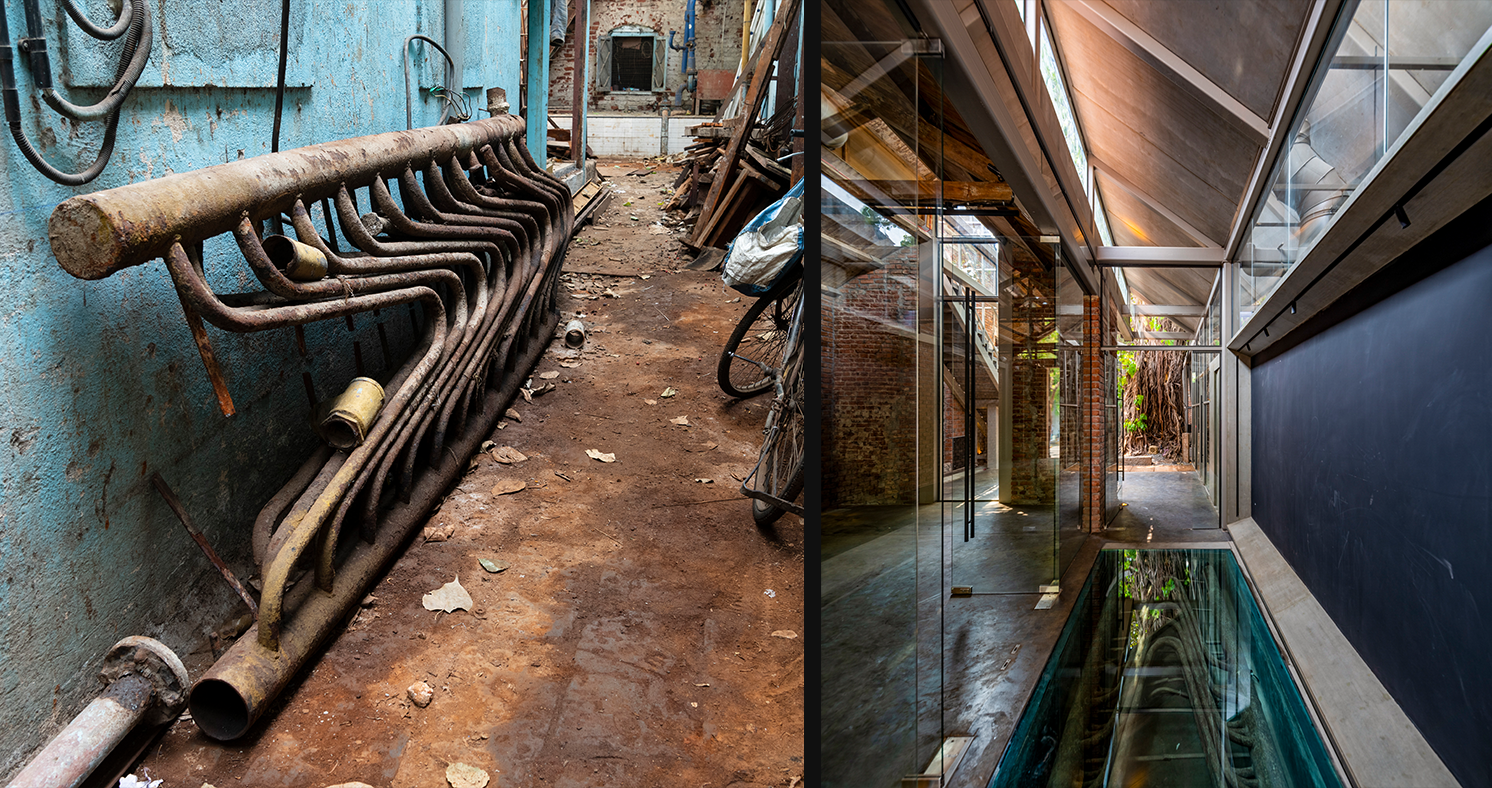
IF.BE: Journey between 'Found' and 'Made'

The 140-year-old Ambico Ice Factory is located in Ballard estate, the heart of Mumbai's heritage precinct. We have re-imagined the space as IF.BE (Ice Factory Ballard Estate), an organism that merges art, exhibition, events, performance, gathering, food and design. It is a space for encounters, organised within beautiful but ageing structures surrounding a large Banyan tree. The suturing is imagined to heighten the fragile, almost tenuous relationship between the ‘Found’ and the ‘Made’. It manifests the true nature of IF.BE as an exploration of the liminal space between speculation (IF) and reality (BE).

Entrance from Calicut Street
Time, arbitrary additions, asymmetric structural and infrastructural loading had caused a level of damage and decay that was revealed through a patient and assiduous examination of walls, foundations, roofs, etc. The drawing archives revealed a continuous courtyard connecting Calicut and Cochin Street, which was now cluttered with ad-hoc structures and metal roofs.

“The Ice and the Banyan Tree…they provided the spark of inspiration that resulted in the IFBE project”- Kamal Malik
Substation
For four months, the factory's decades-old plaster walls were gently scraped before the first semblance of brickwork could emerge. The building's vintage Burma teak woodwork, lost to time, was slowly uncovered.


Courtyard
The roots of the tree, growing within the premises, had been choked under rubble and concrete. This tree provided the spark of inspiration that birthed the project - the shift from the Ambico Ice Factory to IF.BE. The recovery of the courtyard, restoring safety and clarity to the existing structure, revealing the organisational and physical anatomy, allowing the Banyan tree to breathe and finding a way to shelter the new/additional spaces through a dialogue with the original structures was critical.
Substation Connect
The pitched lantern roof of the sub-station extends over the courtyard and impacts the large glass walls of the newly formed ‘Cathedral’ Space.


Cathedral
The existing North-light truss roofs are extended over the Cathedral but this undergoes two mutations to rotate 90-degrees to form the East-light roofs, while simultaneously dipping sharply towards the existing stone boundary wall to preserve light and ventilation for the neighbouring structure.

Cafe


Ice Factory
The main Ice Factory, sub-station, cold storage and the ice-cubing area required intensive examination and surgical intervention through retrofits to stabilise crumbling, warped and leaking walls, sagging roofs and trusses (some of which had detached from their bearings). The original gantry, used to move slabs of ice, continues to be housed in the Ice Factory and be mobilised as part of art installations as well as used to innovatively partition the room.
“The thickly plastered walls were scraped scrupulously for close to four months alone before the first semblance of brickwork could emerge” -Arjun Malik
The team at Malik Architecture has sensitively both "unmade" and "remade" the Ice Factory, spending hundreds of manhours onsite, over three years. Treating the factory as an archaeological site, the team dug deep, unsure of what they'd find. Eventually, a palimpsest of small material fragments and measurements were pieced together to understand the Ice Factory's spatial vocabulary.


Industrial artefacts found on site were creatively repurposed to evoke the factory's history - giant cooling coils used to manufacture ice have been embedded in the glass floor towards the entrance, giving the space a museum-like quality.


